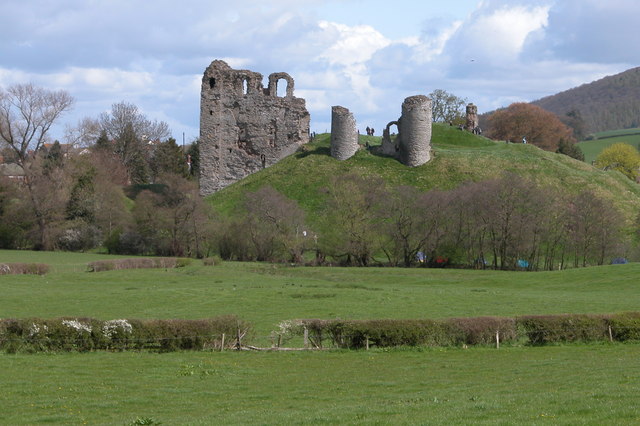De Say on:
[Wikipedia]
[Google]
[Amazon]
 de Say (Saye, Sai) is the
de Say (Saye, Sai) is the
/ref>
 Robert de Say obtained lands in
Robert de Say obtained lands in
surname
In some cultures, a surname, family name, or last name is the portion of one's personal name that indicates one's family, tribe or community.
Practices vary by culture. The family name may be placed at either the start of a person's full name ...
of an old Norman
Norman or Normans may refer to:
Ethnic and cultural identity
* The Normans, a people partly descended from Norse Vikings who settled in the territory of Normandy in France in the 10th and 11th centuries
** People or things connected with the Norm ...
noble family originating from Sai, Orne
Sai is a commune in the Orne department in north-western France. It has a population of 222. Its inhabitants are known as ''Sayiens'' (male) and ''Sayiennes'' (female).
Toponymy
The name of the village has been found under the forms: ''Saium'' ...
. The first records are about William de Say and Picot de Say, Norman conquerors. The de Say family, held lands in England and France.
French origin
The family descends from Picot Avenel de Say, a vassal of Robert I, Duke of Normandy. His son Robert Fitz-Picot, Lord of Aunay, was co-founder in 1060, of the abbey of St Martin at Séez.Seton, Robert. ''An Old Family: Or, The Setons of Scotland and America'', Brentano's, 1899, p. 14/ref>
England
William andRobert de Say
de Say (Saye, Sai) is the surname of an old Norman noble family originating from Sai, Orne. The first records are about William de Say and Picot de Say, Norman conquerors. The de Say family, held lands in England and France.
French origin
The ...
(also called Picot de Say) were the sons of Robert Fitz-Picot and his wife Adelaide. They accompanied William the Conqueror
William I; ang, WillelmI (Bates ''William the Conqueror'' p. 33– 9 September 1087), usually known as William the Conqueror and sometimes William the Bastard, was the first House of Normandy, Norman List of English monarchs#House of Norman ...
in 1066.
William de Say's descendants inherited the manor of West Greenwich
West Greenwich is a town in Kent County, Rhode Island, United States. The population was 6,528 at the 2020 census. West Greenwich was named for the historic town of Greenwich, Kent, England. It was separated from East Greenwich in 1741. Stude ...
, now known as Deptford, and adopted the Maminot arms, ''Quarterly, or and gules''.
Robert de Say
Robert de Say, also called Picot de Say, was a Norman knight who arrived inShropshire
Shropshire (; alternatively Salop; abbreviated in print only as Shrops; demonym Salopian ) is a landlocked historic county in the West Midlands region of England. It is bordered by Wales to the west and the English counties of Cheshire to th ...
after the Norman invasion. He was the son of Robert Fitz-Picot and his wife Adelaide of Normandy. The family name de Say comes from the Norman village of Sai, in Orne.
 Robert de Say obtained lands in
Robert de Say obtained lands in Shropshire
Shropshire (; alternatively Salop; abbreviated in print only as Shrops; demonym Salopian ) is a landlocked historic county in the West Midlands region of England. It is bordered by Wales to the west and the English counties of Cheshire to th ...
, building a motte and bailey castle, known as Clun Castle overlooking the lands he had seized from Edric the Wild
Eadric ''the Wild'' (or Eadric ''Silvaticus''), also known as Wild Edric, Eadric ''Cild'' (or ''Child'') and Edric ''the Forester'', was an Anglo-Saxon magnate of Shropshire and Herefordshire who led English resistance to the Norman Conquest, acti ...
after the invasion. Robert was an important vassal of Roger of Montgomery
Roger de Montgomery (died 1094), also known as Roger the Great, was the first Earl of Shrewsbury, and Earl of Arundel, in Sussex. His father was Roger de Montgomery, seigneur of Montgomery, a member of the House of Montgomerie, and was probably ...
, the 1st Earl of Shrewsbury and a major early Norman magnate. Robert died in 1098.
His daughter married the local Welsh lord, Cadwgan ap Bleddyn, who acquired permission to move to England, probably Clun, in 1109.Lieberman, p.44. Upon Picot de Say's death in 1098, the castle passed to his son, Henry de Say, who continued possession of Clun Castle.
See also
* Clan Seton *Clun
Clun ( cy, Colunwy) is a town in south west Shropshire, England, and the Shropshire Hills Area of Outstanding Natural Beauty. The 2011 census recorded 680 people living in the town.Combined populations for the two output areas covering the tow ...
References
Sources
* *Bibliography
* Brown, Reginald Allen. (1989) ''Castles From The Air.'' Cambridge: Cambridge University Press. . * Eyton, William. (1862) "The Castles of Shropshire and its Border." in ''Collectanea Archæologica: communications made to the British Archaeological Association'' Vol. 1. London: Longman. * Liddiard, Robert. (ed) (2003) ''Anglo Norman Castles.'' Woodbridge: Boydell Press. * Lieberman, Max. (2010) ''The Medieval March of Wales: The Creation and Perception of a Frontier, 1066-1283.'' Cambridge: Cambridge University Press. . * Pettifer, Adrian. (1995) ''English Castles: A Guide by Counties.'' Woodbridge: Boydell Press. . * Suppe, Frederick C. "Castle guard and the castlery of Clun," in Liddiard (ed) 2003. {{DEFAULTSORT:Say, de Medieval English families Anglo-Norman families Anglo-Normans 11th-century births 1098 deaths